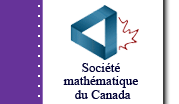|
GRADE 6
UNIT: Math - Data Management; Social Studies - Interaction - Pre-contact Indigenous Peoples of the Americas (Time: pre-1500); Science - Energy in Our Lives (enrichment)
THEME: Human Face of Mathematics - Mathematics in Aboriginal Culture
EQUIPMENT
- atlatl and dart of various lengths (For example 0.5m, 1 m, 1.5 m, 2 m)
- pylon (or other easily seen target that cannot damage or be damaged by the dart)
- measuring tape
- coloured tape
- distance, speed & accuracy chart
- calculator
- computers with a spreadsheet program
PREREQUISITE KNOWLEDGE:
Math - Data Management
D-8 Create classifications for data collected
D-9 Display data using
- histograms, line graphs (broken)
- frequency diagrams, tally
- circle graphs (fractional)
D-10 Discuss and determine the most suitable method(s) to display data
D-11 Use computer software to assist in the organization and display of data
D-15 determine, from a set of data, the
- mean (average)
- range, median, mode
Calculating speed (v=d/t)
LEARNING OUTCOMES:
Math - Data Management
D-1 Acquire data through
- experiments
- observation
- published information
D-2 Recognize that the data collected are affected by
- the nature of the sample
- the method of collection
- the sample size
- biases
D-3 Discuss factors that may distort the results of data collected; e.g.: gender, ethnic, socioeconomic, age
D-13 Discuss the reasonableness of data and results
D-14 Discuss, interpret, and ascribe meaning to the organized data
Social Studies - Interaction
Pre-contact Indigenous Peoples of the Americas (pre-1500)
Locate and gather information from various sources to organize and share on the following topics:
- Indigenous peoples of the Americas developed distinctive and diverse cultures.
- Arctic - Inuit
- Newfoundland - Beothuk
- Northeastern region - Huron, Algonquian (Micmac, Shawnee), Iroquois (Mohawk Oneida, Cayuga)
- Mississippi/Ohio River Basins - Hopewell, Adena (The Temple Mound Builders)
- Southeastern U.S.A. - Cherokee, Creek, Choctaw, Natchez, Caddo, Delaware
- Mexico - Anasazi, Aztec, Toltec, Olmec, Zapotec, Maya
- Brazil - Indians of the Amazon (Kayapo, Atroari, Caraja, Mura, Omagua)
- Caribbean - Arawak
- Argentina - Araucanian Indians
The lifestyles of Indigenous peoples were influenced by:
- the available resources
- the climate and the land
- interactions with other peoples
Teacher Set Up
- Using the coloured tape, mark off a circle with a diameter of 2 m and a throw line about 10 m from the perimeter of the circle. Place the pylon in the centre of the circle
- Divide the class into groups of no less than 4. For each group you will need one student to throw the dart, one student to measure the distance thrown, one student to time the flight of the dart and another to record the data. One student from each group will throw the dart for the sake of consistency.
Student Instructions
Background Information
- Research how the resources, climate, land and interactions with other peoples effected various pre-contact indigenous groups.
- Discover which groups used the atlatl and if so what it looked like.
- Research the origins of the atlatl specifically as it relates to the Aztecs daily life.
- Research should answer the following questions and back up with evidence:
- What regions of the world has the atlatl been used?
- How does the atlatl and dart vary by region and how has it varied over time?
- What design do you feel is the most effective?
- Why were the Aztecs conquered by the Spanish?
- Where is the atlatl used today?
Hypotheses
- After your teacher demonstrates how to use the atlatl, create a hypotheses on which length of dart will be able to travel the farthest, be the most accurate and will travel the fastest.
Part 1: Maximum Distance & Speed & Accuracy
- Using the stop watch time the dart from the time it leaves the atlatl until it lands on the ground.
- Throw each dart about 5 times each as far as possible, not crossing the line.
- Measure each throw from the line to see how far the dart traveled.
- Record the distance and time traveled for each length.
- Keep a running tally of how many times it lands within the target circle for each length.
Part 2: Physical Characteristics of Thrower
- Measure the height of each thrower and their arm length.
- Compare result from previous two parts for their thrower with the rest of the class.
- Data Analysis
- Calculate the speed for each throw
- Determine which length of dart traveled the farthest, which was the most accurate and which travels the fastest.
- Compare results to hypotheses.
- Represent data graphically from a spreadsheet by choosing an appropriate graph type
- Determine which dart length had the best combination of distance and accuracy.
- Answer the following questions:
- How does the physical attributes of the person throwing the atlatl effect the experiment?
- Is there a relationship between physical attributes, maximum distance thrown and accuracy? If so, what?
- What other factors would effect the experiment?
- How could the results differ for different people throwing the dart?
- Discuss why the person who is throwing the dart should also be the same.
- Justify answers and the type of graph used.
- Compare your results to the rest of the class, why may different groups have different results?
- Discuss how the experiment could be changed to have more accurate results.
Lessons for Atlatl Users with Some Experience - Grade 6 PDF
Lessons for Beginner Atlatl Users - Grade 6
Atlatl Home Page
|

